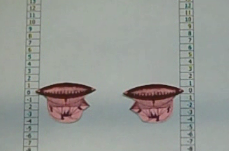Or search by topic
Number and algebra
Geometry and measure
Probability and statistics
Working mathematically
Advanced mathematics
For younger learners
Up, Down, Flying Around



Up, Down, Flying Around printable sheet - instructions
Up, Down, Flying Around printable sheet - board
Up, Down, Flying Around printable sheet - balloon pieces
Up, Down, Flying Around printable sheet - number cards
Up, Down, Flying Around printable sheet - alternative number cards
Watch the video below to see how to play the Balloon Game.
If you can't see the video, click below to read the rules.
This is a game for two players. Each places their balloon on the game board, pointing to zero:

You have two piles of cards; operation cards (add/subtract) and number cards (-9 to +10).
A positive number is equivalent to puffs of hot air; if you add hot air to your balloon you will rise, and if you subtract hot air you will sink.
A negative number is equivalent to sandbags; if you add sandbags your balloon will sink and if you subtract sandbags your balloon will rise.
Take it in turns to turn over an operation card and a number card. For example, if you turn over add -7, this is like adding 7 sandbags, so your balloon will move down 7 spaces.
To win, you either need to get to the top, or you need to be afloat when your opponent sinks to the bottom.
To play the game, you will need to print out the following:
Board
Balloon Pieces
Number Cards (print out two sets of these and shuffle them together).
Alternatively, you may wish to play with these:
Alternative Number Cards
Here are some other games you can play with the number cards:
Alternative Balloon Game
Take two operation cards and two number cards, and choose how to arrange them to give you maximum lift (or minimise your sinking!). You may need a larger winning target than 20 for this game.
Highest Totals Game
Shuffle the number cards and operation cards. Each player is dealt three number cards and two operation cards. Arrange them to make the highest total you can. The winner gets one point; first to 10 points wins.
Variation 1: Deal each player four number cards and three operation cards.
Variation 2: As above, but arrange the cards to get as close to zero as you can.
Throwing Away Zeros
Deal six number cards to each player.
When it is your turn, you can combine cards with operations of your choice to make zero. (For example, you could discard -7, 3 and -4 because -7 + 3 - -4 =0).
At the end of your turn, take ONE card from the pack.
The winner is the first person to get rid of all their cards.
Related Collections
You may also like
Consecutive Numbers
An investigation involving adding and subtracting sets of consecutive numbers. Lots to find out, lots to explore.
Pair Sums
Five numbers added together in pairs produce: 0, 2, 4, 4, 6, 8, 9, 11, 13, 15 What are the five numbers?

Negative Dice
If the odd numbers on two dice are made negative, which of the totals cannot be achieved?

